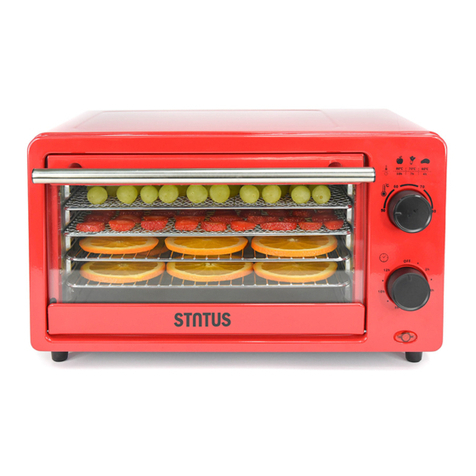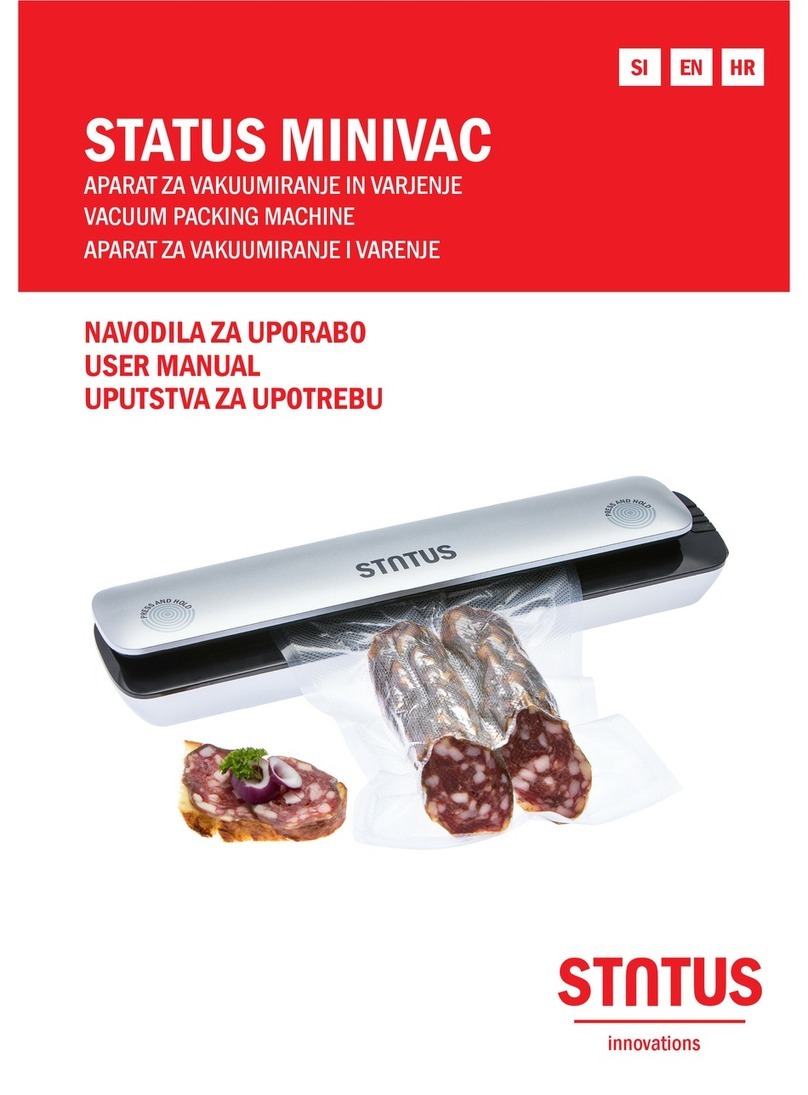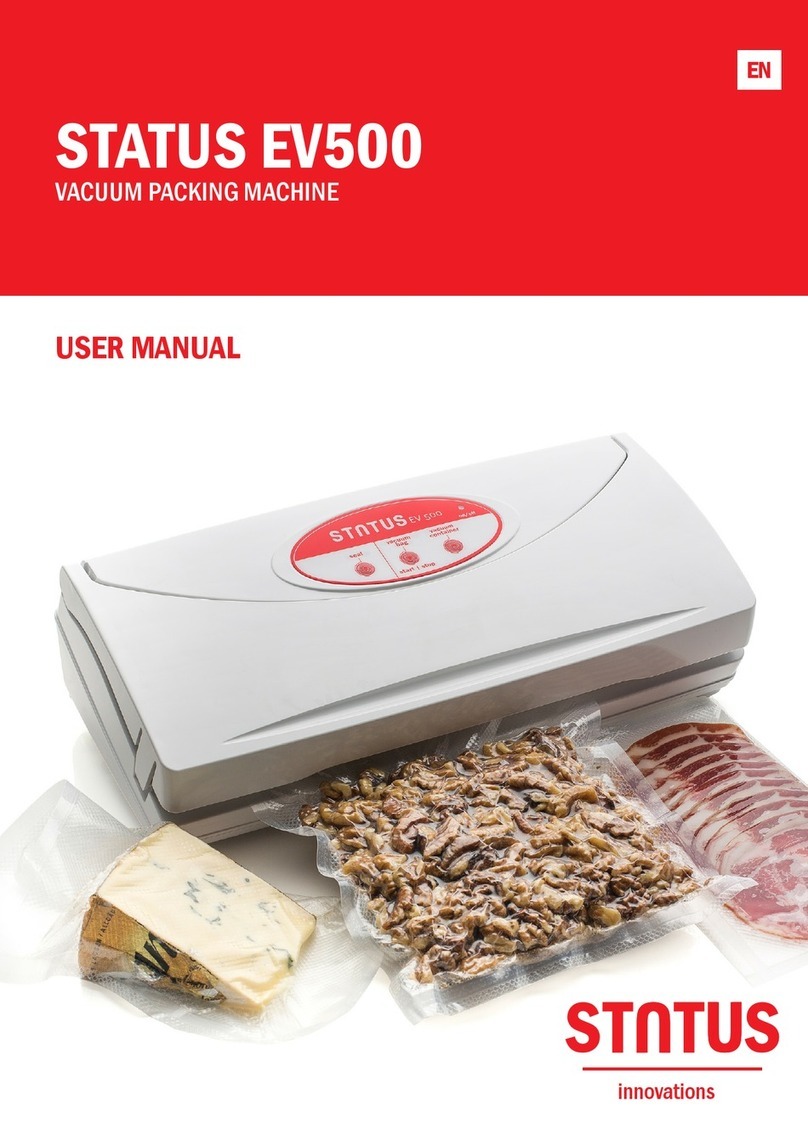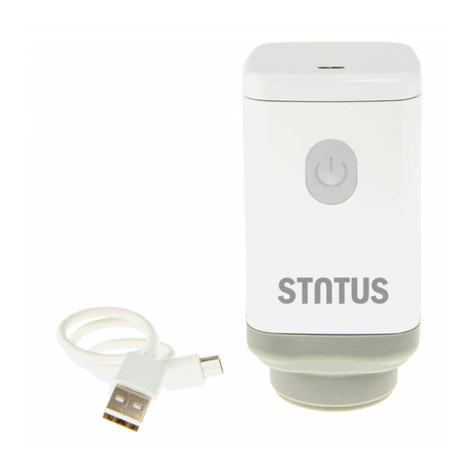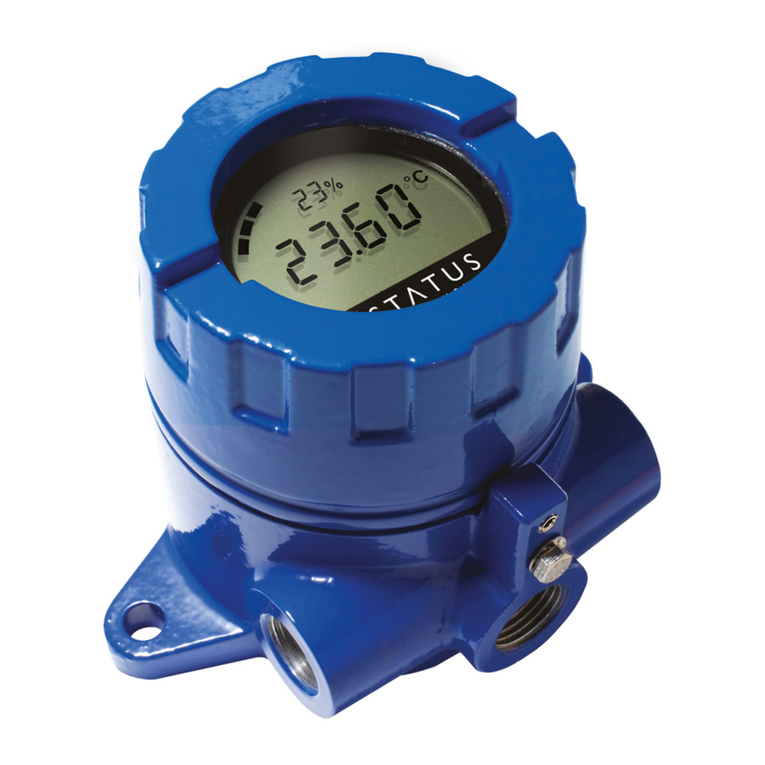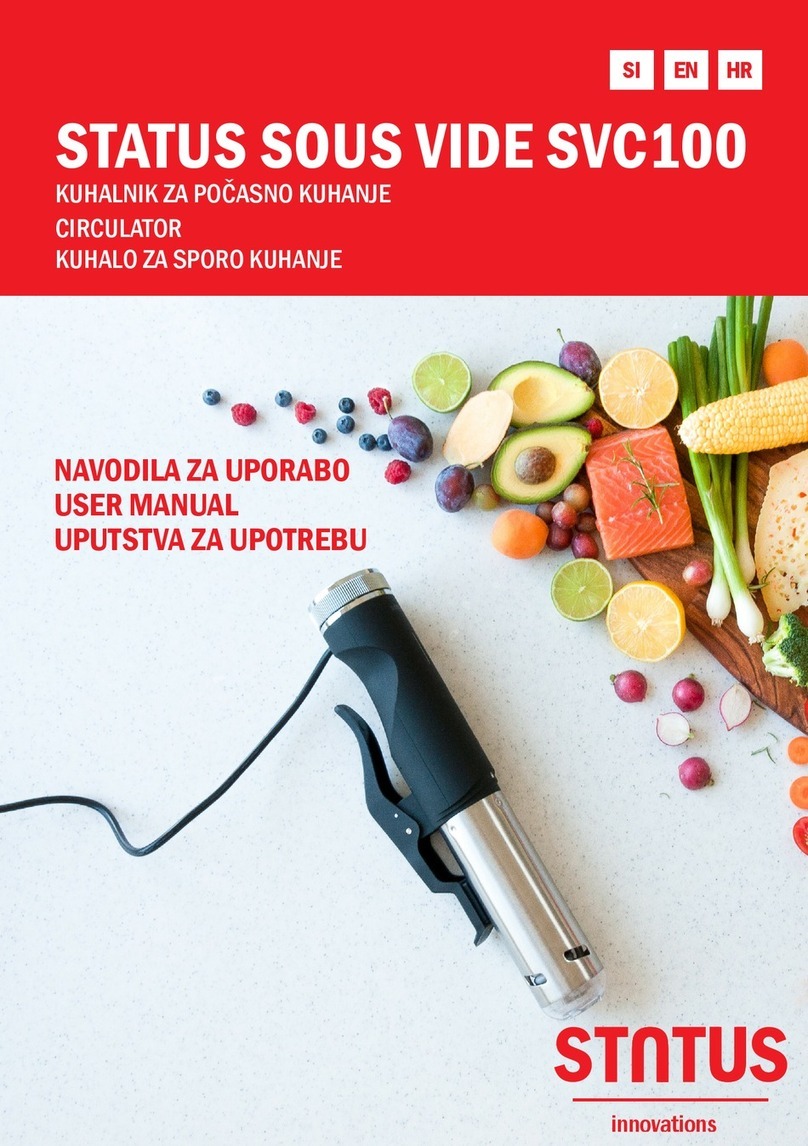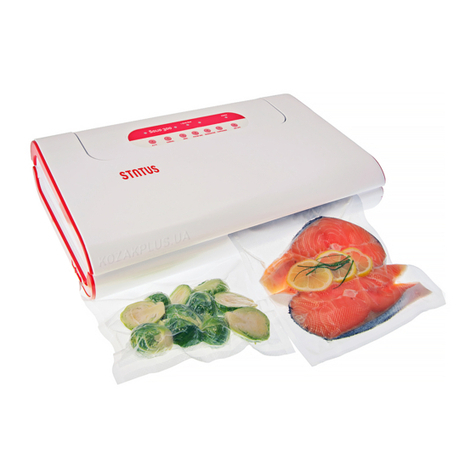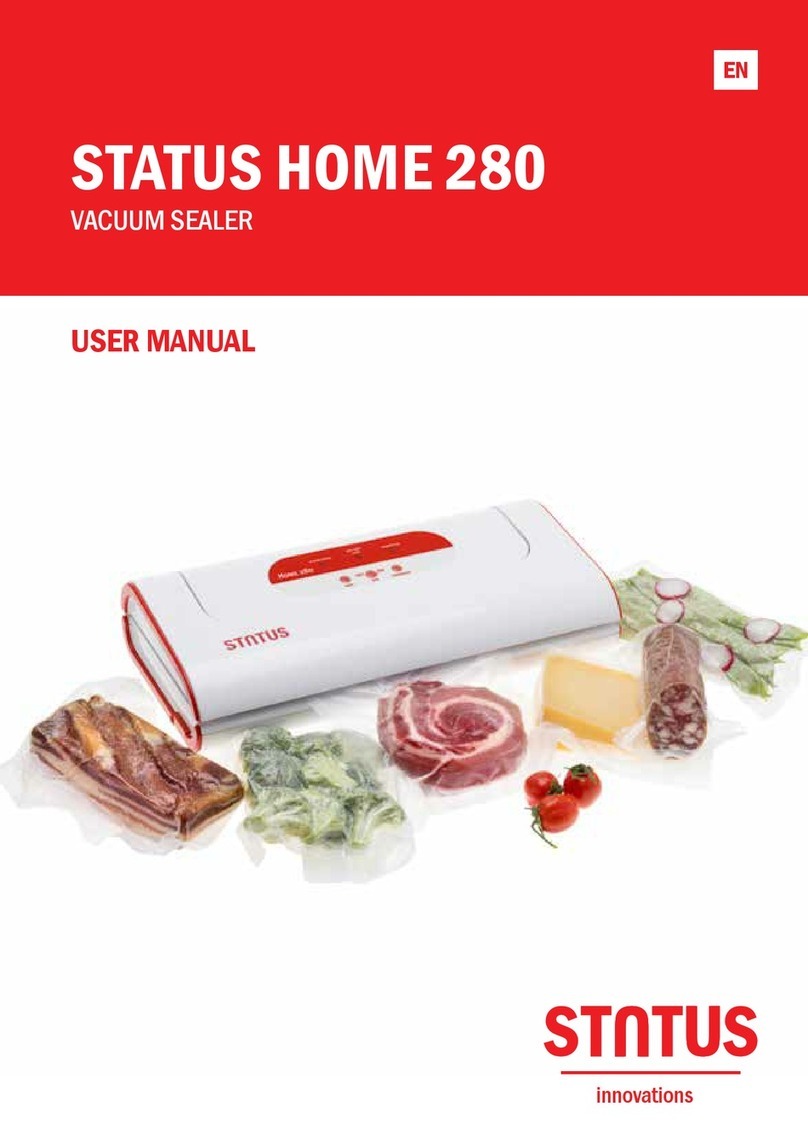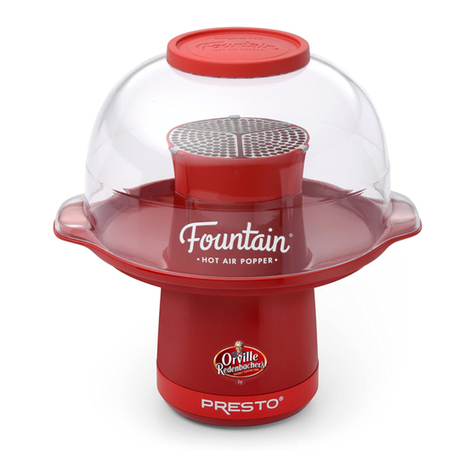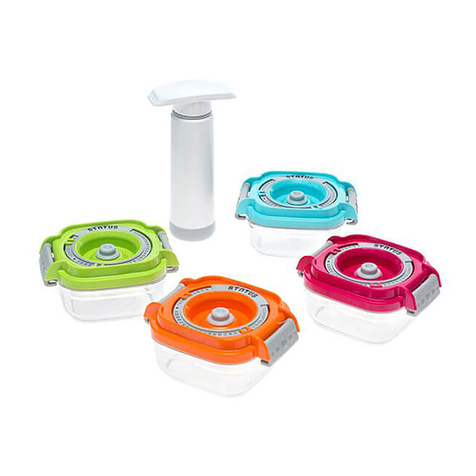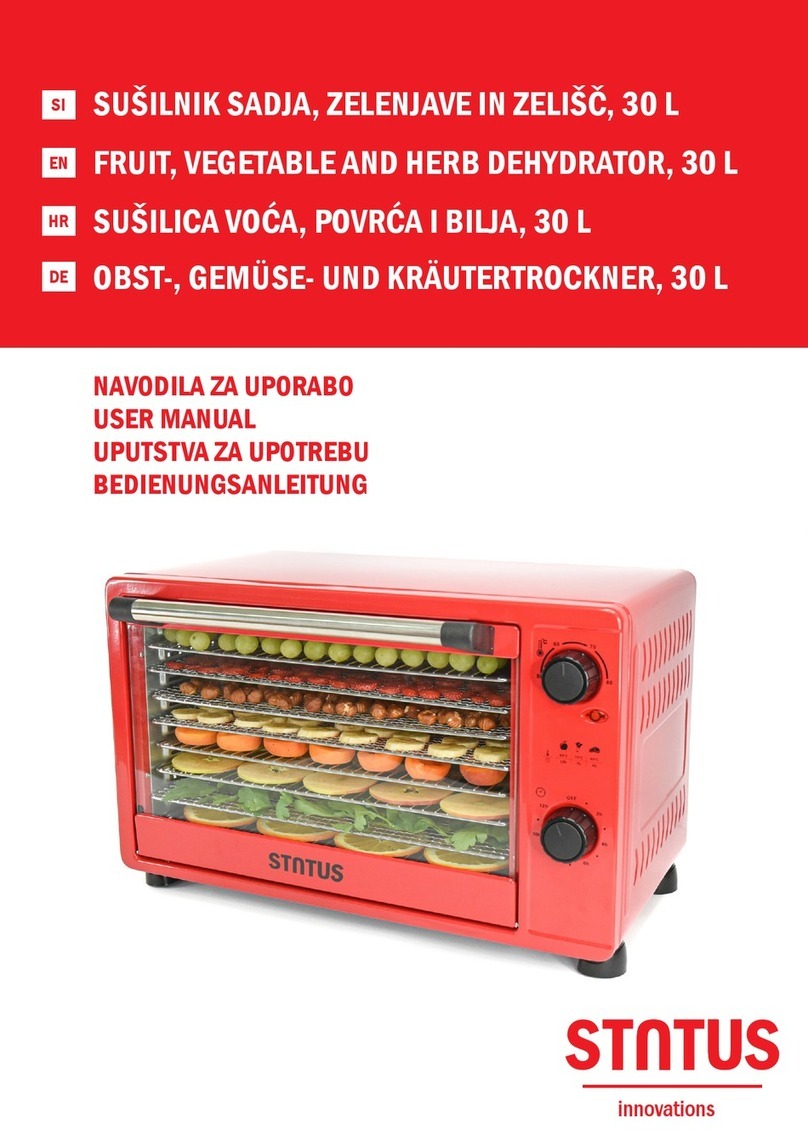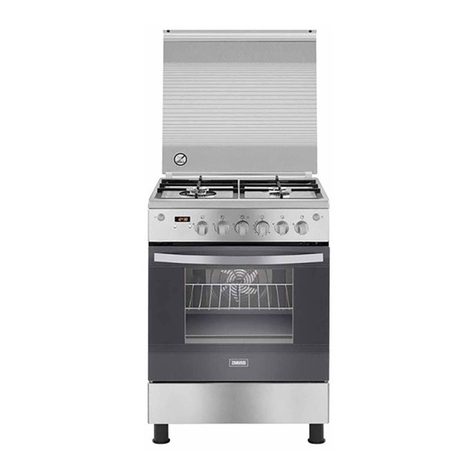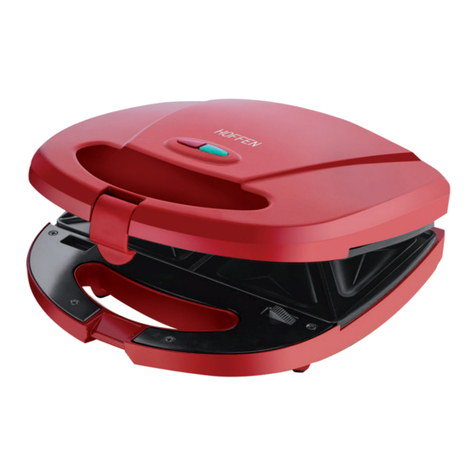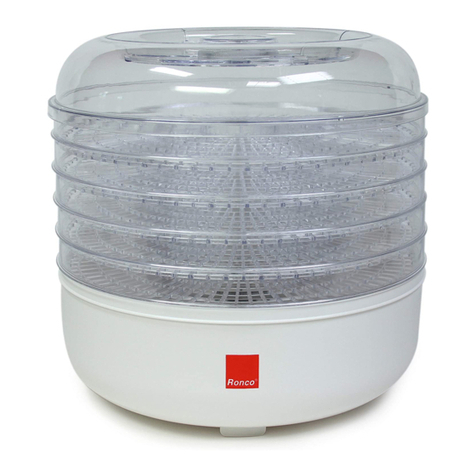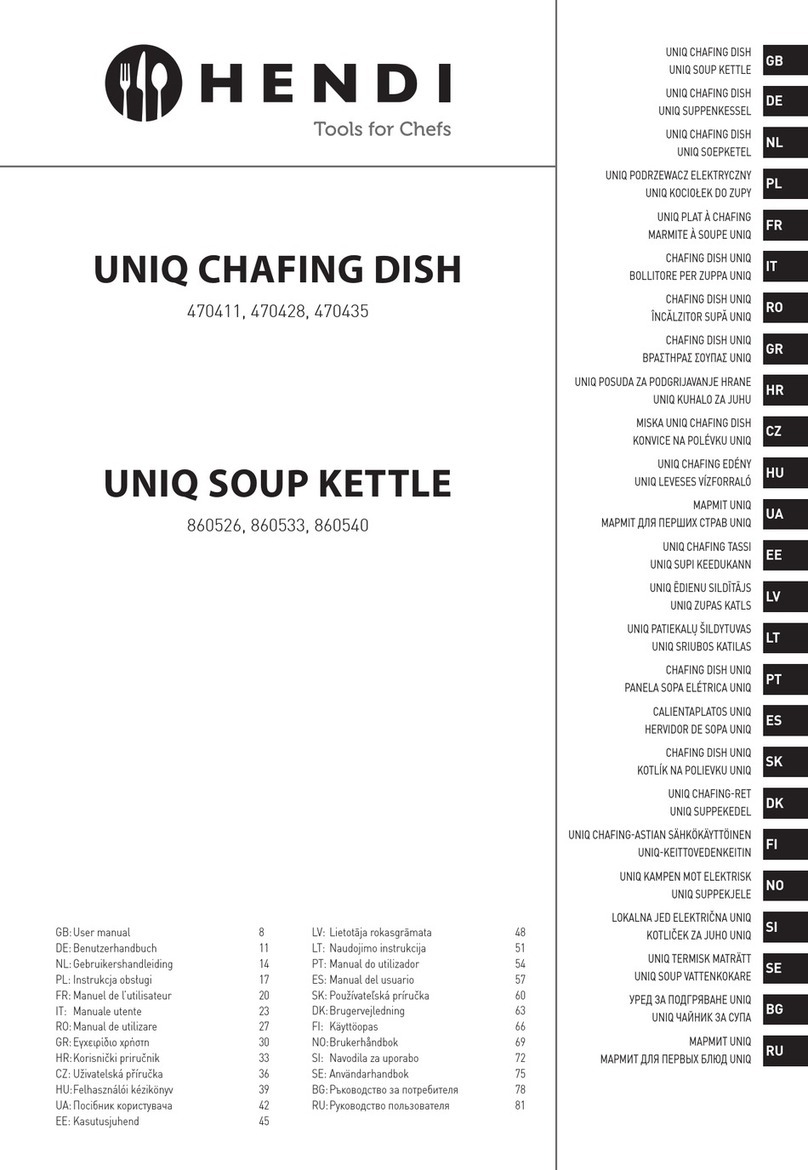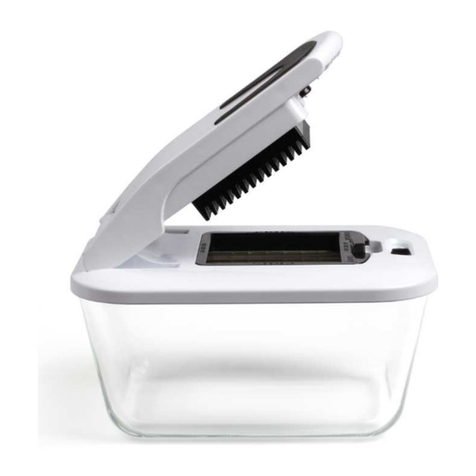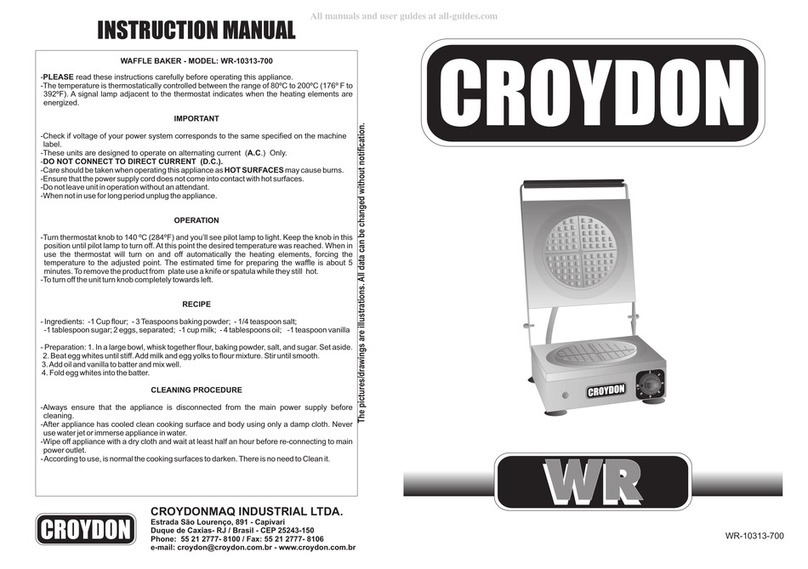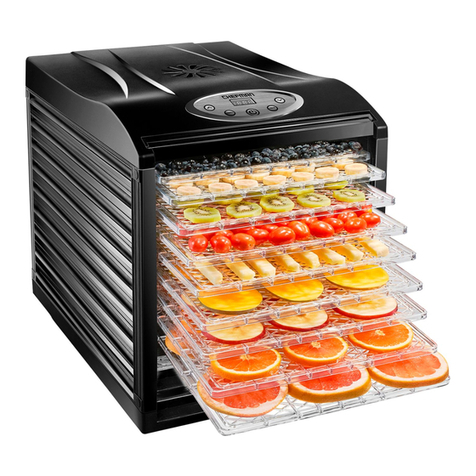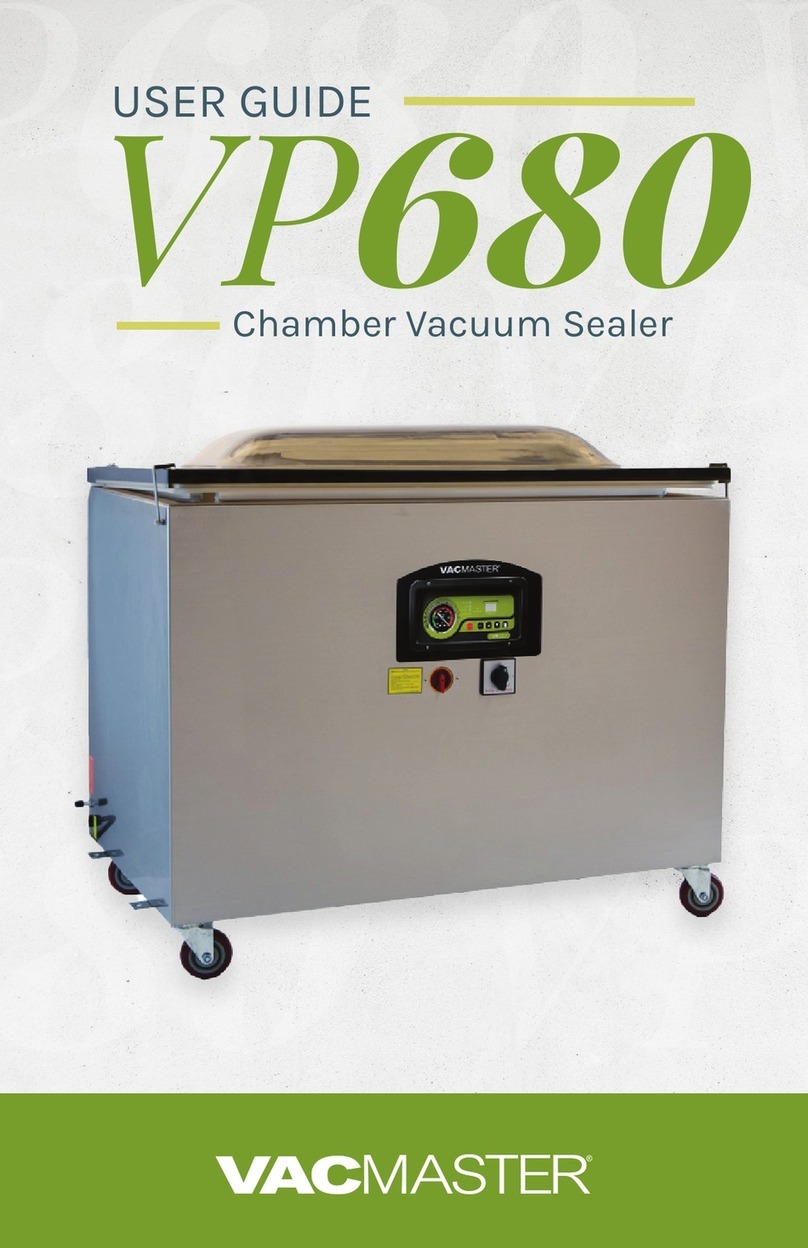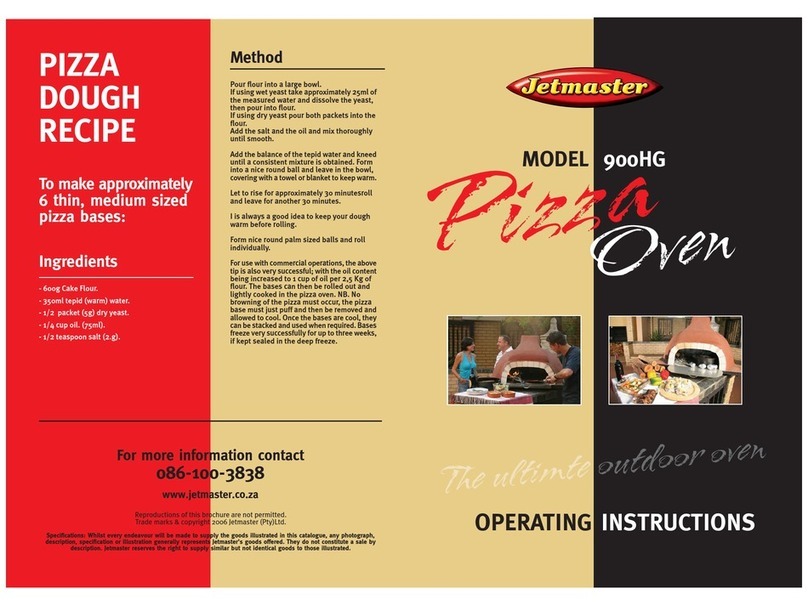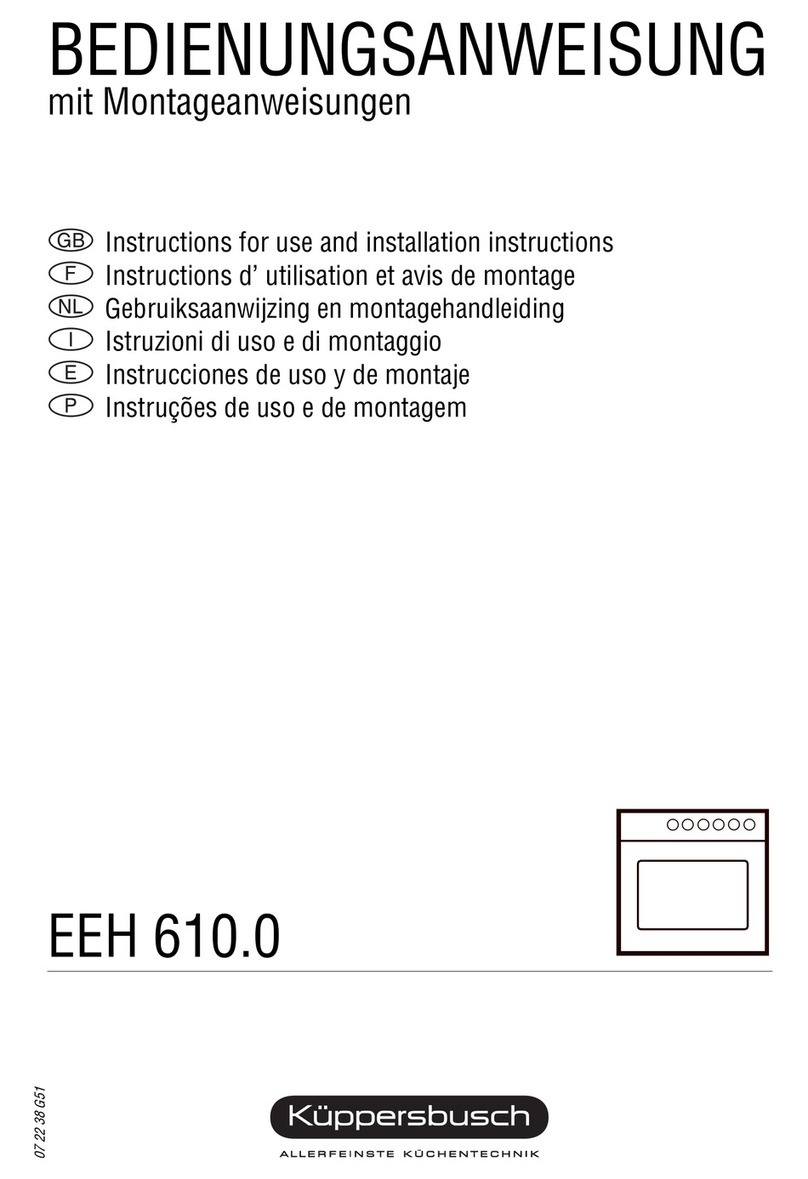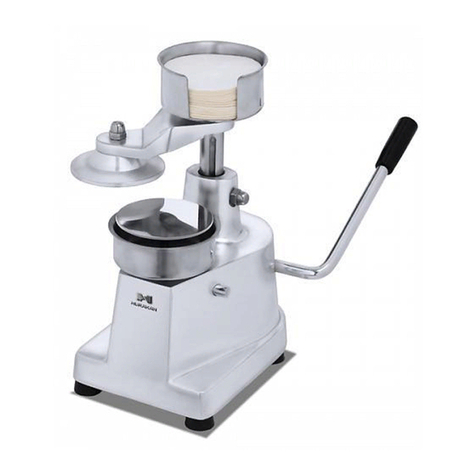
9
2.2.2. FIRST, MAKE A BAG FROM
THE ROLL
When using vacuum bags skip paragraph 2.2.2. and
continue with instructions in paragraph 2.2.3.
a.) Determine the length needed. A bag should be
about 5 cm longer than the item to be vacuum
packed. To reuse the bag leave additional 2.5 cm
of bag material for each time you plan to reuse it or
next time use the bag for smaller items.
b.) Cut off the desired length with the included cutter.
c.) Place the roll on the Sealing Strip and extend it to
the Black Gasket (see Figure 2). Make sure that the
edge is straight and level.
d.) Close the lid.
e.) Press the Seal button (Item 1 in Figure 1) and press
down on lid with your hand (on the left and the
right side) and hold it. The lid will automatically stick
down and seal the bag. If the lid can be opened
during the process, you didn’t press down hard
enough, so repeat the procedure. During sealing,
the light (On/Off) will be illuminated 100%.
f.) When the sealing process is completed, the lid lifts
slightly. Open the lid completely and check the seal.
It should be smooth and transparent over its whole
width.
Figure 2: Place the roll on the Sealing Strip and extend
it to the Black Gasket to seal (see arrows).
WARNING: When using new vacuum appliance or one
that has not been in use for a while black
gaskets can become stiff. Same can happen if
vacuum appliance is stored below room tempara-
tures (in basement). Thus we propose that the lid
is pushed down with both hands or to lock vacuum
appliance and push with one hand. The push has to be
energetic!
2.2.3. WHEN THE BAG IS MADE,
PLACE FOOD IN IT AND VACUUM
PACK.
The bag should be at least 5 cm longer than the space,
occupied by the item to be vacuum packed.
a.) Place the items to be vacuum packed in the bag.
b.) Make sure that inner surfaces (for the sealing edge)
are clean, dry and free from food materials.*
c.)
Place the lled bag on the work surface in front
of the appliance and pull it to the middle of the
Vacuum Channel (see Figure 3 and Item 7 in Figure 1).
d.) Make sure that the bag placed on the Sealing Strip
is completely smooth (not creased).
Figure 3: Place the lled bag in the middle of the Va-
cuum Channel (between salient circle line - see arrows).
e.) Close the appliance, press on the lid and hold it
down.
f.) Activate the Vacuum Packing of Bag button (Item
2 in Figure 1). Hold lid pressed until indicator light
begins to shine with its full power. The bag will be
vacuum packed and sealed automatically. Due to
high vacuum pressure the lid stays closed while the
machine operates. If the lid opens during this pro-
cess then press the lid down rmly.
g.) When the sealing process is complete, wait for the
lid to release automatically and remove the bag.
Check the seal - it should be smooth and transpa-
rent over its whole width.
